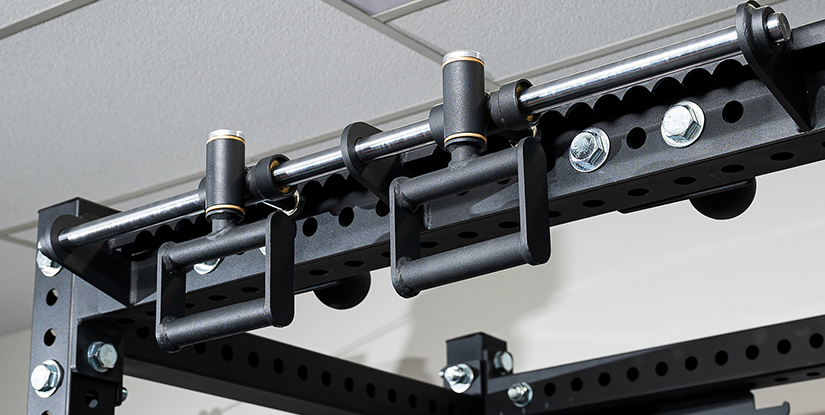Exercise Accessories: Essential Gear to Boost Performance and Safety

Introduction to Exercise Accessories
Exercise accessories are the supporting tools that elevate training efficiency, protect the body, and enable greater exercise variety. From resistance bands to heart-rate monitors, carefully selected accessories help athletes, fitness enthusiasts, and rehabilitation patients achieve measurable progress while reducing injury risk.
Why Accessories Matter
Accessories do more than complement equipment; they shape training outcomes. The right accessory can increase load management, improve movement quality, and provide objective feedback. For example, weight belts stabilize the core for maximal lifts, while compression sleeves aid recovery and proprioception.
Core Categories of Exercise Accessories
- Performance-enhancing gear: lifting straps, weight belts, grip pads.
- Mobility and recovery tools: foam rollers, massage balls, compression garments.
- Resistance and functional training: resistance bands, suspension trainers, ankle weights.
- Monitoring and feedback: heart-rate monitors, fitness trackers, cadence sensors.
- Safety and protection: knee sleeves, wrist wraps, mouthguards.
How to Choose the Right Accessories
Select accessories based on goals, training modality, and biomechanics. Consider these practical criteria:
- Purpose: Identify whether the accessory supports strength, mobility, recovery, or monitoring.
- Quality and durability: Inspect materials, stitching, and warranty for frequent-use items.
- Fit and comfort: Ensure ergonomic design and appropriate sizing to avoid interference with movement.
- Progressive integration: Introduce one accessory at a time to evaluate benefit and avoid dependency.
- Budget vs. value: Prioritize items that directly influence performance or safety.
Accessory Use Cases and Programming Tips
Integrate accessories strategically rather than as habitual crutches. Examples:
- Strength phases: Use belts and straps for maximal single- and low-repetition sets, then taper off during hypertrophy-focused cycles.
- Rehabilitation: Employ resistance bands to restore range of motion and progressive load capacity with low joint stress.
- Endurance training: Leverage heart-rate monitors and cadence sensors to maintain target zones and optimize pacing.
- Mobility sessions: Add foam rolling and targeted compression to facilitate recovery between intense workouts.
Maintenance and Longevity
Proper care extends lifespan and performance. Guidelines:
- Wipe down sweat-prone accessories after use and store in a dry environment.
- Inspect straps, stitching, and seams routinely; replace if integrity is compromised.
- Follow manufacturer instructions for electronic devices, including charging cycles and firmware updates.
Safety Considerations
Accessories enhance training only when used correctly. Key safety points:
- Avoid overreliance: train foundational movement patterns without permanent assistance from supportive gear.
- Progressive loading should remain individualized; accessories do not substitute for proper technique.
- Consult professionals for rehabilitation or if you have pre-existing conditions before adding therapeutic devices.
Cost-effective Investments
Not every accessory warrants high expense. Prioritize versatile, multi-use items that offer measurable returns in performance or recovery. Examples include quality resistance bands, a stable yoga mat, and an accurate heart-rate monitor.
Integrating Accessories into a Training Plan
Create a simple schedule for introduction and reassessment. Limit accessory use to specific phases: assistance tools during heavy-load weeks, mobility tools during deload weeks, and monitoring devices throughout. Track outcomes to determine continued relevance.
Conclusion
Exercise accessories are strategic enablers when chosen and used intelligently. They can accelerate progress, protect joints, and clarify training feedback. A professional approach—assessing purpose, quality, fit, and measurable benefit—ensures accessories contribute to sustainable performance gains.
FAQs
- Q1: Do beginners need accessories? A: Start with basics—mat, resistance band, and a timer—before adding specialized gear.
- Q2: How often should I replace straps or bands? A: Inspect monthly; replace at first sign of fraying, loss of elasticity, or stitching failure.
- Q3: Can accessories prevent injuries? A: They reduce risk when used correctly, but correct technique and progression are primary prevention methods.
- Q4: Are compression garments worth it? A: They can aid recovery and proprioception; effectiveness varies by individual and activity.
- Q5: When to use a lifting belt? A: For maximal lifts or heavy sets where intra-abdominal pressure supports the spine; not needed for light reps.
- Q6: How to clean electronic monitors? A: Use a soft cloth and manufacturer-recommended wipes; avoid submersion and harsh chemicals.
- Q7: Can resistance bands replace free weights? A: They complement training by offering variable resistance but may not fully substitute heavy load adaptations.
- Q8: Should I buy premium gear first? A: Invest based on frequency and purpose; prioritize quality where safety is critical.
- Q9: How to assess accessory effectiveness? A: Track performance, pain levels, and recovery metrics before and after introduction for 4–8 weeks.

